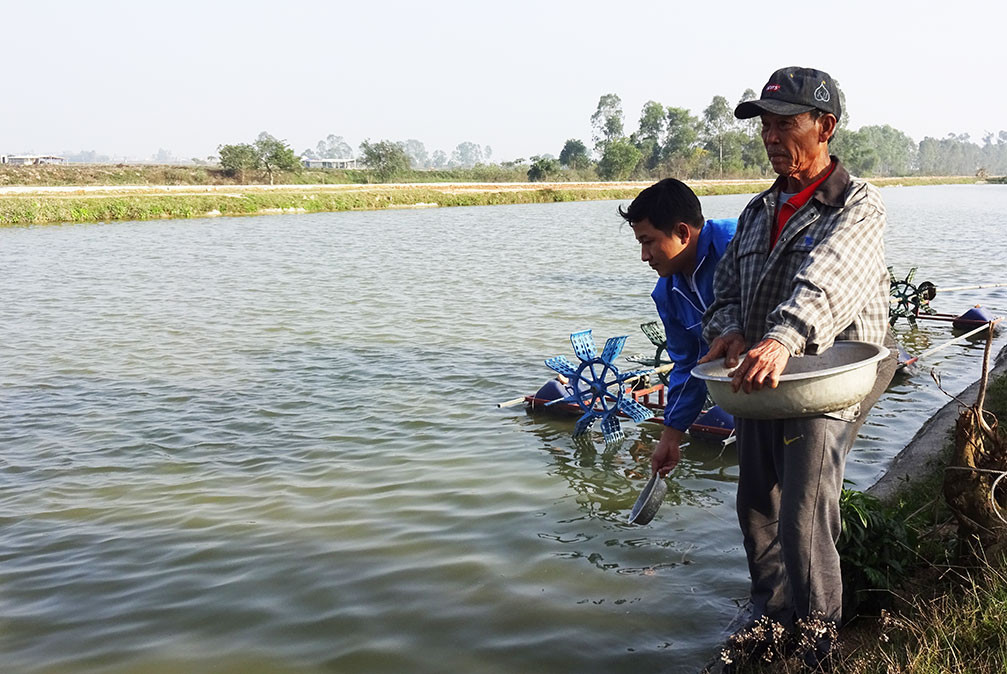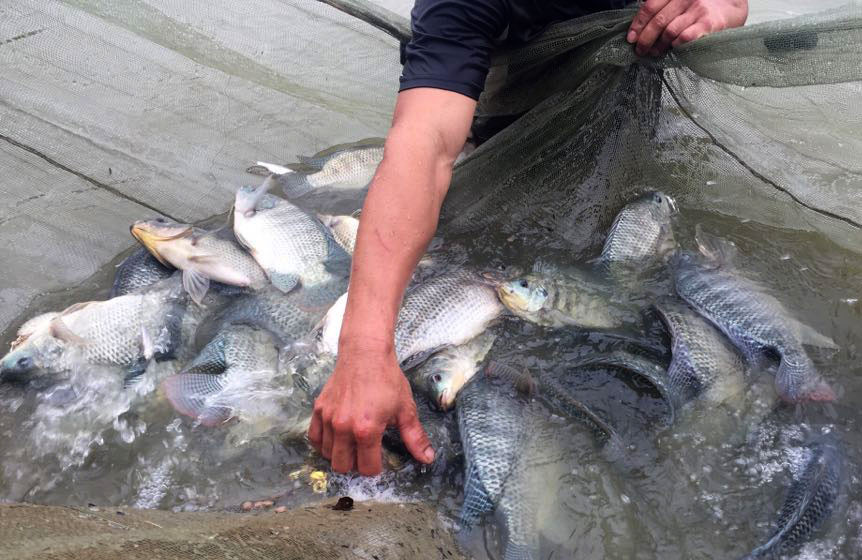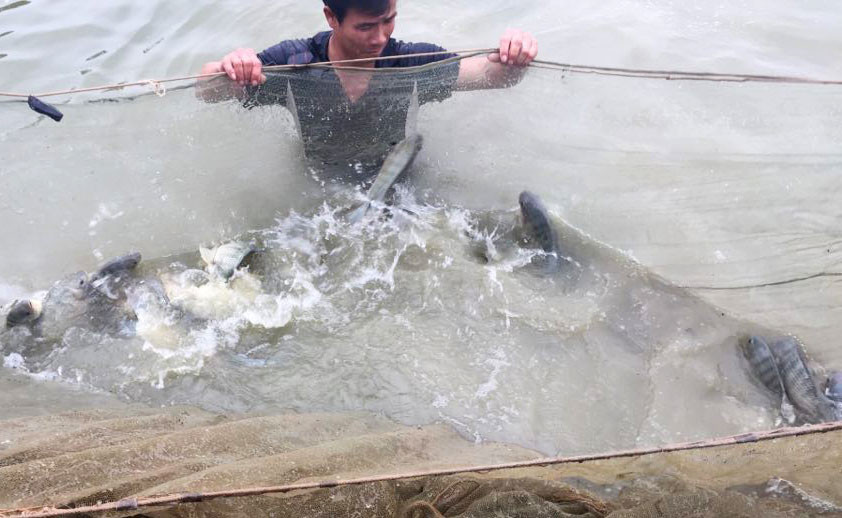Yen Thanh farmers raise VietGAP tilapia with a yield of 20 tons/ha
(Baonghean.vn) - Yen Thanh has a large area of ponds and lakes, which is a potential for aquaculture development, especially freshwater fish farming. Currently, in addition to traditional fish farming methods, farmers have successfully built clean fish farming models according to VietGAP standards, bringing in high income.
For the past 4 years, Mr. Tran Quy Cu in Chau Linh hamlet, Duc Thanh commune has invested in re-planning 3.5 hectares of ponds that were previously used for traditional fish farming to raise monosex tilapia according to VietGAP standards.
According to Mr. Quy, to keep fish healthy, achieve consistent productivity and quality, first of all, we must strictly follow the technique, prevent fish diseases with biological products and regularly supplement vitamin C. EspeciallyWater source, food, and breed must meet requirements, ensuring oxygen for fish during hot weather or weather changes.
If the technical procedures for raising fish are followed well, the survival rate of the fish after being released will be over 70%; after 5 months of raising, the weight will reach 0.5 kg/fish. According to his family's calculations, each hectare of water surface yields an average of 20 tons of commercial fish.
 |
| The monosex tilapia farming model according to VietGAP in Tan Thanh commune (Yen Thanh) is invested in accordance with standards, ensuring environmental factors. Photo: Thai Duong |
Mr. Ho Sy Sinh's household in Tan Trung hamlet, Tan Thanh commune, has also invested in raising clean fish following VietGAP standards for the past 3 years on a water surface area of nearly 2 hectares.
Mr. Sinh assessed: Raising fish with food safety and hygiene gives higher productivity and profit, and more stable output than traditional fish farming. Last year alone, the family sold nearly 80 tons of clean fish, guaranteed quality, firm, delicious meat, purchased at the pond by traders from many places inside and outside the province at the price of 30,000 - 31,000 VND/kg. It is expected that the next harvest, due to the increase in food market prices, will hopefully bring in a larger source of income.
With the advantage of being a semi-mountainous plain district, the whole district has 1,684 hectares of ponds and lakes, not to mention the system of self-flowing rivers and canals, which are favorable for the development of freshwater fish farming, especially in deep-lying areas and dam lakes. In 2017 alone, freshwater fish farming in Yen Thanh produced a total output of nearly 4,500 tons of various types of fish.
 After 5 months of farming, monosex tilapia weigh from 0.5 - 0.6 kg/fish. Photo: Hong Hanh After 5 months of farming, monosex tilapia weigh from 0.5 - 0.6 kg/fish. Photo: Hong Hanh |
Through the assessment of the district's Department of Agriculture and the experience of farmers, developing a model of tilapia farming under VietGAP has helped farmers change their thinking to develop in a sustainable direction. Raising fish using this method has a high survival rate, few diseases, shortened farming time and reduced investment and costs. But more importantly, it has helped people gain more knowledge and experience in regenerating and raising aquatic products.
 |
| Currently, tilapia is purchased at the pond by traders from many places inside and outside the province at a price of 30,000 - 31,000 VND/kg. Photo: Thai Duong |
To develop the potential, the district's Department of Agriculture directed the communes to focus on propagating to the people, especially the traditional fish farms, to switch to large-scale biosafety livestock farming, in order to gradually create a chain of links in the production of clean food sources. In addition to the support of the specialized science and technology sector, the district encouraged households to establish cooperatives, help each other in the production and breeding process and find stable product outlets.
In fact, intensive monosex tilapia farming in the direction of VietGAP in Yen Thanh not only brings practical economic efficiency to people, but also has many meanings in social life. In particular, the important factor is ensuring food hygiene and safety, demonstrating the responsibility of farmers in providing clean food sources, improving the quality of public health. From there, opening up a new direction in linking production, supplying clean product chains, ensuring quality to compete in the current market mechanism.


